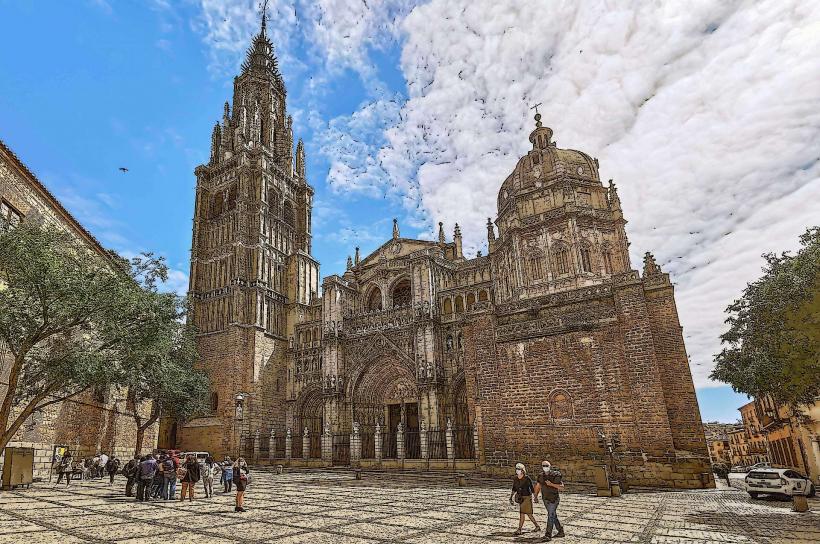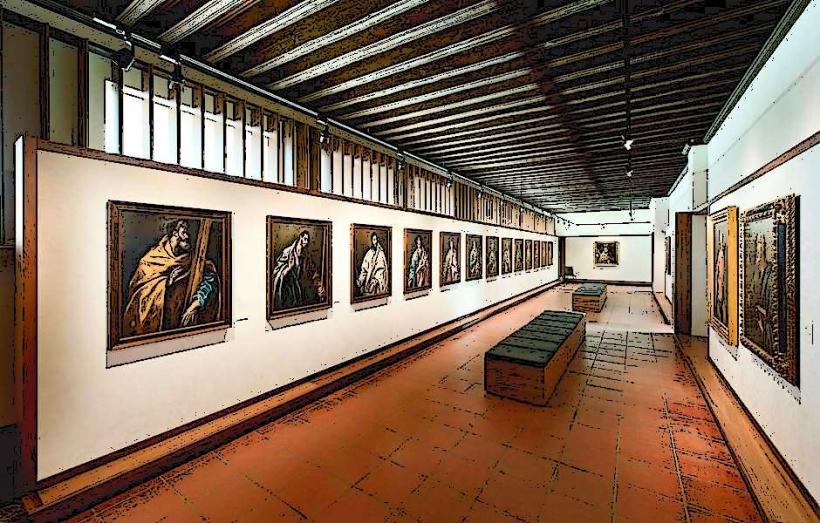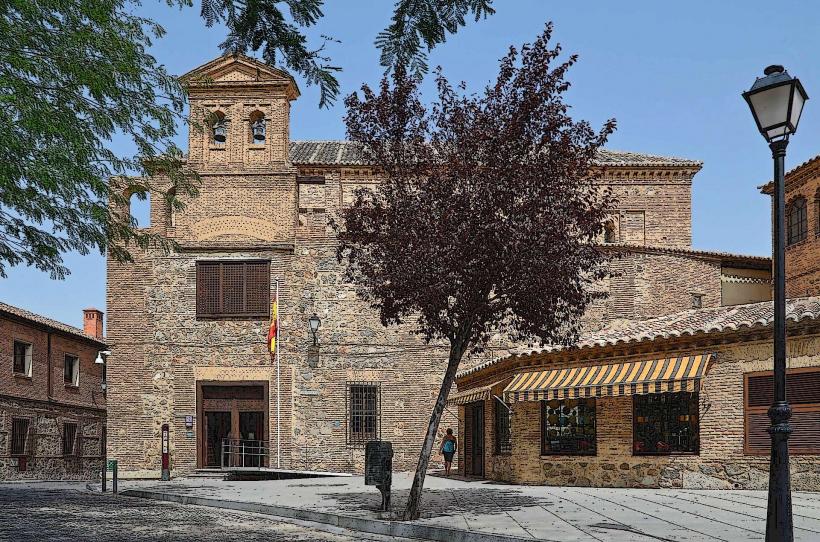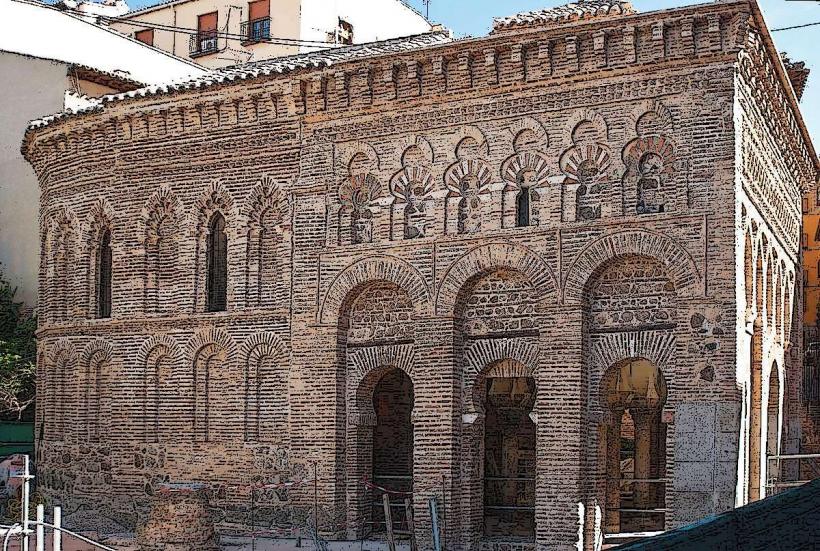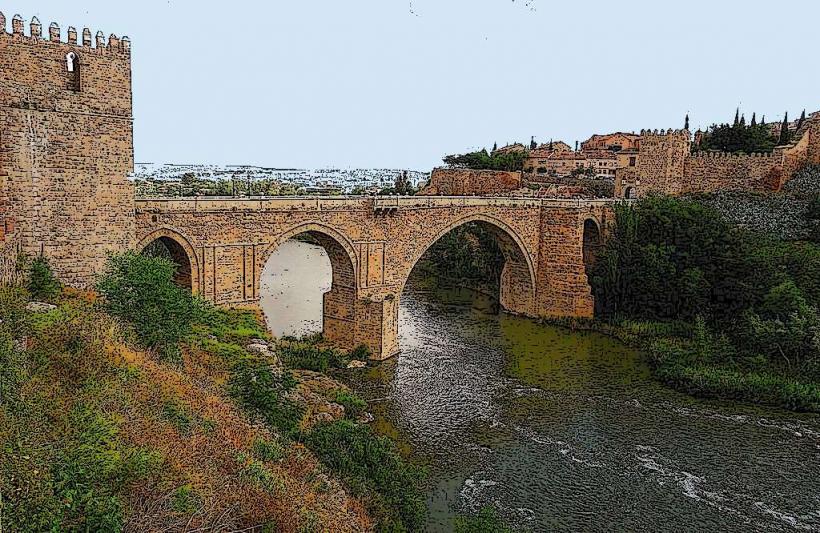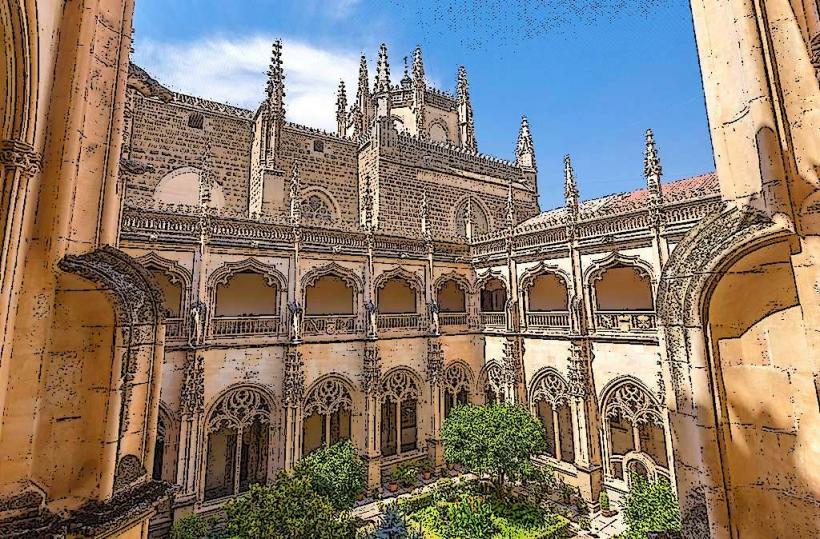Information
Landmark: Alcazar of ToledoCity: Toledo
Country: Spain
Continent: Europe
The Alcázar of Toledo is one of the most prominent and historic landmarks in the city of Toledo, Spain. Perched on a hilltop, the Alcázar has a commanding view of the surrounding landscape and has played a crucial role in the city’s history for over a thousand years. Known for its military and royal significance, the Alcázar is a symbol of Toledo's rich past, spanning from the Roman era to its role in the Spanish Civil War.
Historical Background
The Alcázar's origins trace back to the Roman era when it was first established as a fortress, likely to serve as a stronghold for the Roman military. Over the centuries, the structure has undergone numerous expansions and reconstructions, serving different purposes under various rulers.
- During Visigothic rule, the Alcázar was used as a royal residence, and later, under Moorish rule (711-1085), it became a strategic military stronghold.
- After the Reconquista and the capture of Toledo by King Alfonso VI in 1085, the Alcázar continued to serve as a royal residence and military fortress.
- The Habsburg period in the 16th century saw extensive renovations, transforming the Alcázar into a more luxurious palace. During the reign of Charles V, the Alcázar was further developed, but it continued to serve military purposes as well.
Architecture and Structure
The Alcázar of Toledo is a massive fortified palace built in a rectangular shape, with four large towers at each corner. The structure combines various architectural styles, including Renaissance, Baroque, and Mudejar, reflecting the long and diverse history of its construction and the different cultural influences that have shaped it.
Key Features of the Alcázar:
Imposing Facade: The main façade is marked by symmetrical Renaissance-style architecture. The stonework is intricate, with defensive features like battlements and machicolations (openings in the walls for dropping projectiles or boiling substances on attackers).
Towers: The Alcázar has four corner towers, each offering panoramic views of Toledo and the surrounding plains. These towers were originally designed for defensive purposes but now provide excellent viewpoints for visitors.
Interior Layout: The interior of the Alcázar is organized into multiple courtyards, galleries, and rooms, many of which have been restored to showcase the palace’s historical importance. The structure features a blend of military and royal palace elements.
Military Significance: The Alcázar is an important example of military architecture, with its strong defensive features, fortifications, and thick stone walls. It was designed to withstand sieges and protect both its occupants and the surrounding city.
Role in History
The Alcázar has played an essential role throughout Spanish history, and its significance extends beyond its military and royal functions.
1. Spanish Civil War (1936-1939):
- Perhaps the most dramatic chapter in the Alcázar’s history occurred during the Spanish Civil War when it was the site of a famous siege in 1936. The Alcázar became a symbol of Nationalist resistance after Republican forces laid siege to the fortress for several months. Despite being heavily bombarded and surrounded, the Nationalists, led by General José Moscardó, held out against the Republicans until relief arrived.
- This siege turned the Alcázar into a symbol of Nationalist resolve and resistance, and its eventual success was celebrated by Francisco Franco and his followers. Today, there is a museum dedicated to the events of the siege and its significance in the larger context of the Civil War.
2. Royal and Military Functions:
- Over the centuries, the Alcázar served as the residence of various Spanish monarchs and military leaders. It also served as the headquarters for Spain’s military Royal Guard.
- The building’s strategic importance as a fortress and palace made it central to Spain’s military and political life.
Today’s Alcázar: Museum and Cultural Site
Today, the Alcázar is not only a prominent historical monument but also houses the Army Museum of Toledo (Museo del Ejército). The museum showcases the rich military history of Spain, with exhibits ranging from ancient military artifacts to modern warfare. Visitors can explore various galleries and rooms dedicated to the history of Spanish warfare, from the Roman era to the Spanish Civil War and beyond.
Features of the Museum:
Army Museum: The Alcázar’s current role as a museum allows visitors to explore displays on Spanish military history, showcasing weapons, armor, paintings, maps, and other historical artifacts that narrate the evolution of Spanish warfare and the country’s military legacy.
Historical Displays on the Spanish Civil War: The museum has a special emphasis on the Siege of the Alcázar, with detailed exhibitions and interactive displays that recount the dramatic events that took place during the Civil War, including photographs, letters, and personal accounts.
Restored Rooms: Many of the Alcázar’s rooms have been restored to their original splendor, including parts of the royal apartments and military offices, which allow visitors to understand its dual role as both a royal palace and a military fortress.
Panoramic Views: The Alcázar’s upper terraces and towers offer stunning views of Toledo, the Tagus River, and the surrounding countryside. These viewpoints allow visitors to see the strategic importance of the Alcázar’s location in relation to the city.
Visitor Information
- Location: The Alcázar of Toledo is centrally located, situated on a hilltop overlooking the city of Toledo. It is easily accessible from the old town and can be reached on foot or by public transportation.
- Hours: The Alcázar is open to visitors throughout the week, with varying hours depending on the season. It is advisable to check the official website for up-to-date information on opening hours and ticket prices.
- Entry Fee: There is typically an entry fee to visit the Alcázar and the Army Museum, with discounts available for students, seniors, and groups.
- Guided Tours: Visitors can take guided tours to learn more about the Alcázar’s rich history and the various historical periods it has witnessed. These tours often provide insights into the building’s military significance and its transformation over the centuries.
Conclusion
The Alcázar of Toledo is a magnificent fortress with centuries of history embedded in its walls. From its Roman roots to its role as a royal residence, military stronghold, and symbol of resistance during the Spanish Civil War, the Alcázar offers a fascinating glimpse into the history of Toledo and Spain as a whole. Whether you're interested in military history, royal heritage, or Spanish culture, the Alcázar is an essential stop when visiting Toledo, offering both historical depth and stunning views of one of Spain’s most beautiful cities.

